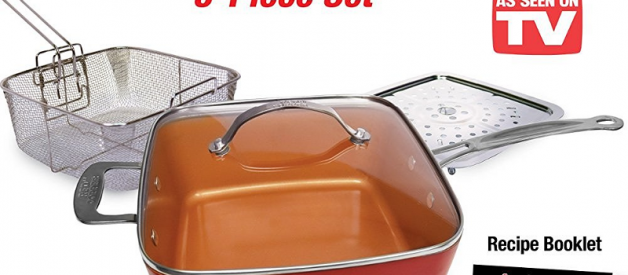Cookware buyers beware
Just a few months from now it will be a wonder that anyone could ever have been lured in ? the hyper-promotion, the audacious lies, the incoherent gibberish, the lack of substance, even the artificial orange tinting ? it will all be so obvious. ?What was I thinking?? will be threading, trending and tweeting (#junkpunkd). Belief in ideas that have repeatedly and unambiguously been exposed as defective, even dangerous, often by conspicuous promises to solve problems people don?t in fact have, is a stubbornly tragic leit motif of human history.
At Brooklyn Copper Cookware we get more than a few inquiries about the proliferation of ?copper? non-stick pans squatting ad space in popular media these days. We?ve looked into a few of these products, hoping to spare you the trouble of doing so yourselves. Better yet, to spare you the regret of spending good money on bad tools.
The 7 Signs of Highly Misleading Marketing
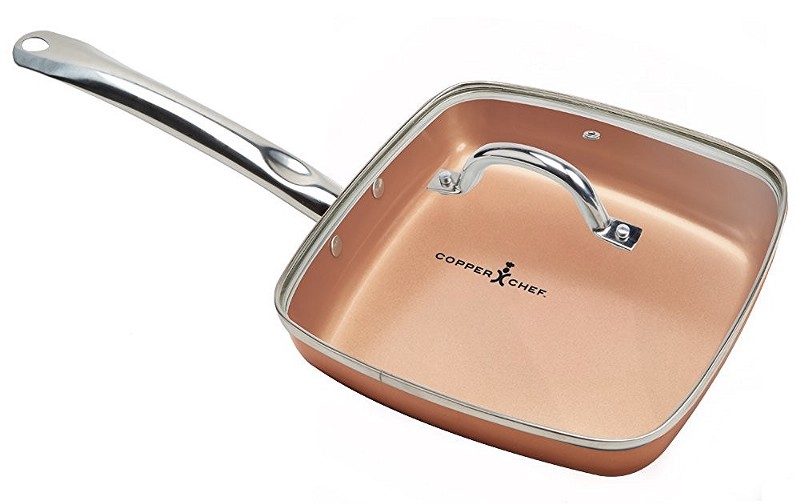 But it says COPPER right on it!
But it says COPPER right on it!
- Red Copper Pan (made by Ruipu Kitchenware, Zhejiang, China)
2. Copper Pro (made by Yongkang Minghan, Zhejiang, China)
3. Copper Chef (aka Tristar Copper, made by Zhejiang Zhongheng Industrial & Trade Co., Ltd. and Yongkang Haocheng Shengshi Industry and Trade Co. Ltd.)
4. Cooksmark Copper (made by Zhejiang Siwei Industry & Trade Co., Ltd.)
5. Jobox Copper (made by Zhejiang Whole World Kitchen Industry Co., Ltd.)
6. Tiabo Copper (made by Wuyi Baiyuan Kitchenware Co., Ltd.)
7. Gotham Steel (made, like its brethren, not of steel but of copper-colored aluminum by Ningbo Zaixing Kitchen Ware Co., Ltd.)
Infused. Like tea. Sort of.
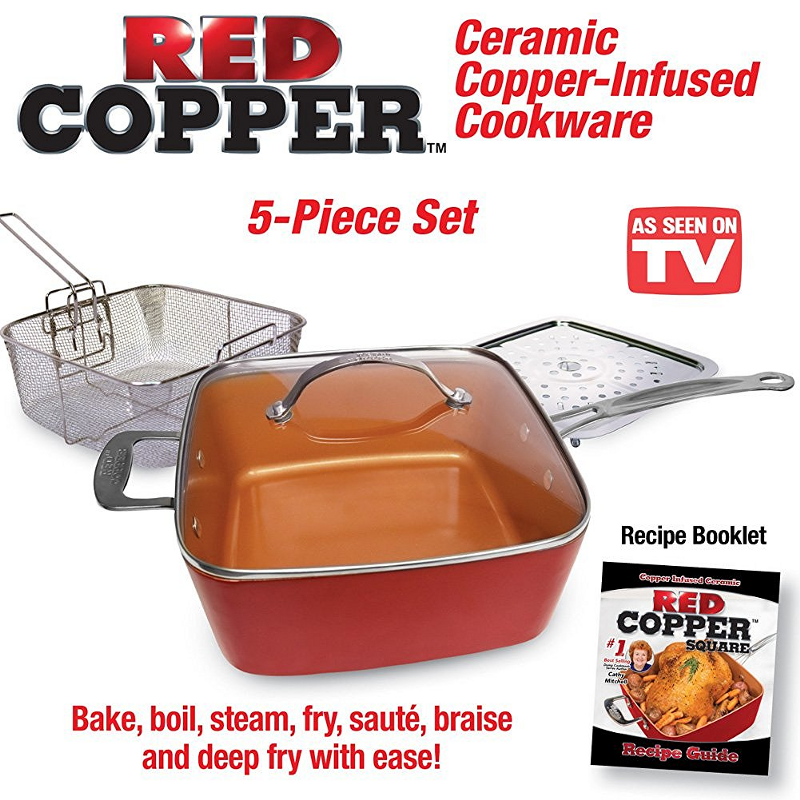
Any traces of copper such cookware might contain is purely incidental ? the detailed product description on the manufacturer?s Alibaba.com listing for the pan above states that the outer coating treatment is ?high-temperature resistant paint?.
Paint.
So, what ?infusion? of copper as there may be could perhaps be (charitably) viewed as pigmentation. These products are made of pressed aluminum sprayed with a garishly colored, silicate impregnated liner, the visual effect of which being the sole basis upon which the rhetorical association with copper is made.
Obviously, the word ?copper? is used here as bait.
Contrary to what the appearance of these pans would have anyone believe, copper is not to be directly cooked upon other than in very specific circumstances, such as when preserving or making meringues. Authentic copper cookware is lined with an inert metal, often tin or stainless steel, which positions a barrier layer between the the conducting metal and acidic preparations. The products we?re talking about here flaunt their would-be copper ?infusions? precisely where knowledgable cooks would least desire that metal to appear.
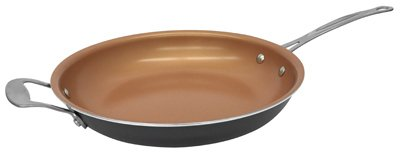 As seen all over the Internet!
As seen all over the Internet!
50 Shades of Scam
There being no copper about these pans, one could reasonably ask ?is coloring a non-stick surface in a crayon copper hue such a bad thing??
No more than coloring a non-stick lining green in order to market it as capital G ?Green?.
Helpful color-coding notwithstanding, and unlike copper, green is not a complexion natural to metals, clays or other materials from which cookware could conceivably, much less safely, be made. The failure of green-colored non-stick surfaces in the cookware market is not mysterious: People didn?t buy the pans because they didn?t buy the green-washing.
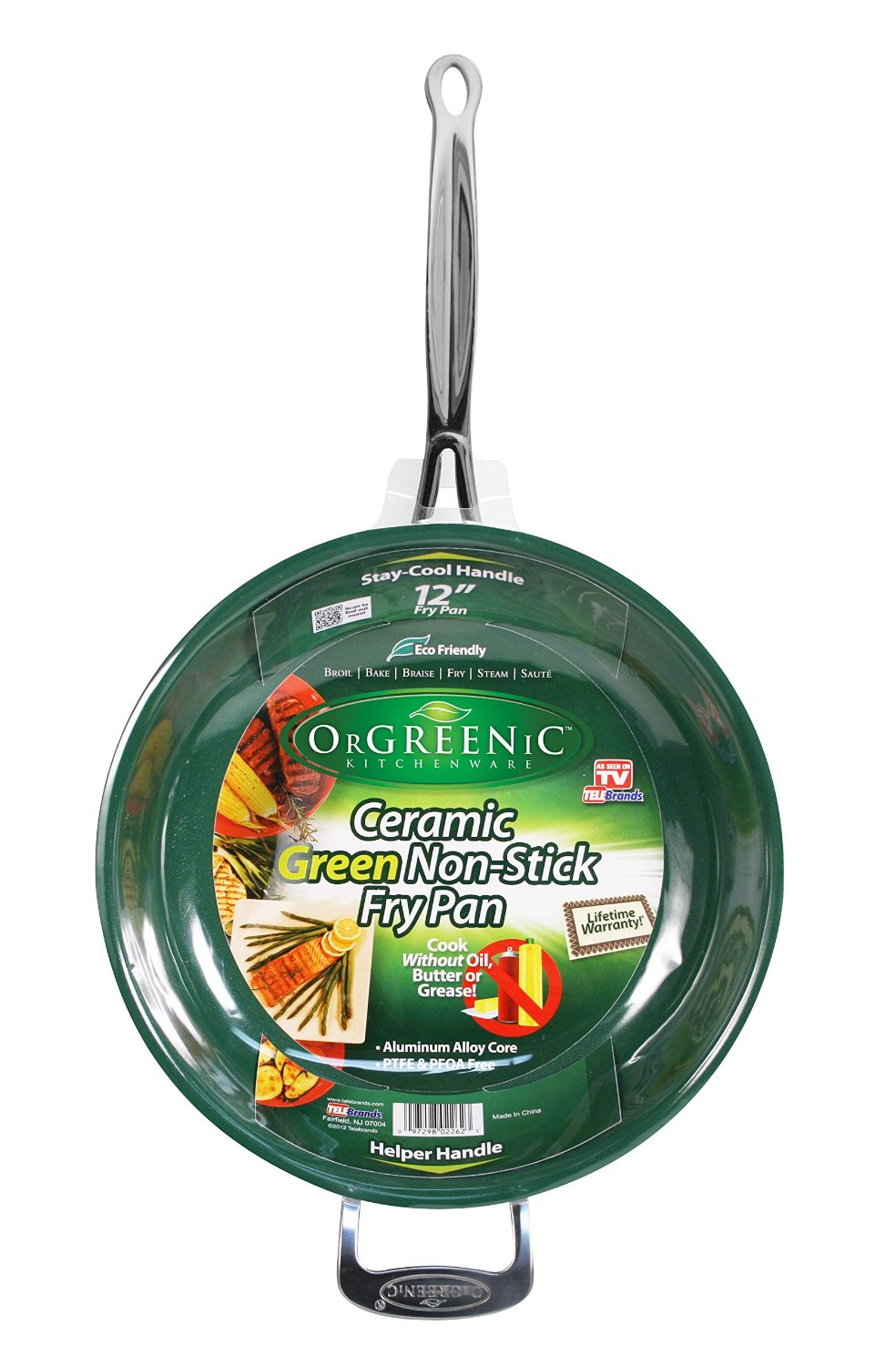 As Seen on TV!
As Seen on TV!
The few who did buy these pans quickly discovered that what was most green about them ended up as plasticine flakes and chips in their food.
An equally bizarre variation on organic appeal are ?marble? non-stick finishes (if ceramic is good, rock must be even better!). I missed this particular joke, which apparently plays better (or is more aggressively marketed) in countries other than the US. Maybe I ignored it because it didn?t leverage pure metal. More likely, I blinked in the time it took for the fad to inflate and pop.
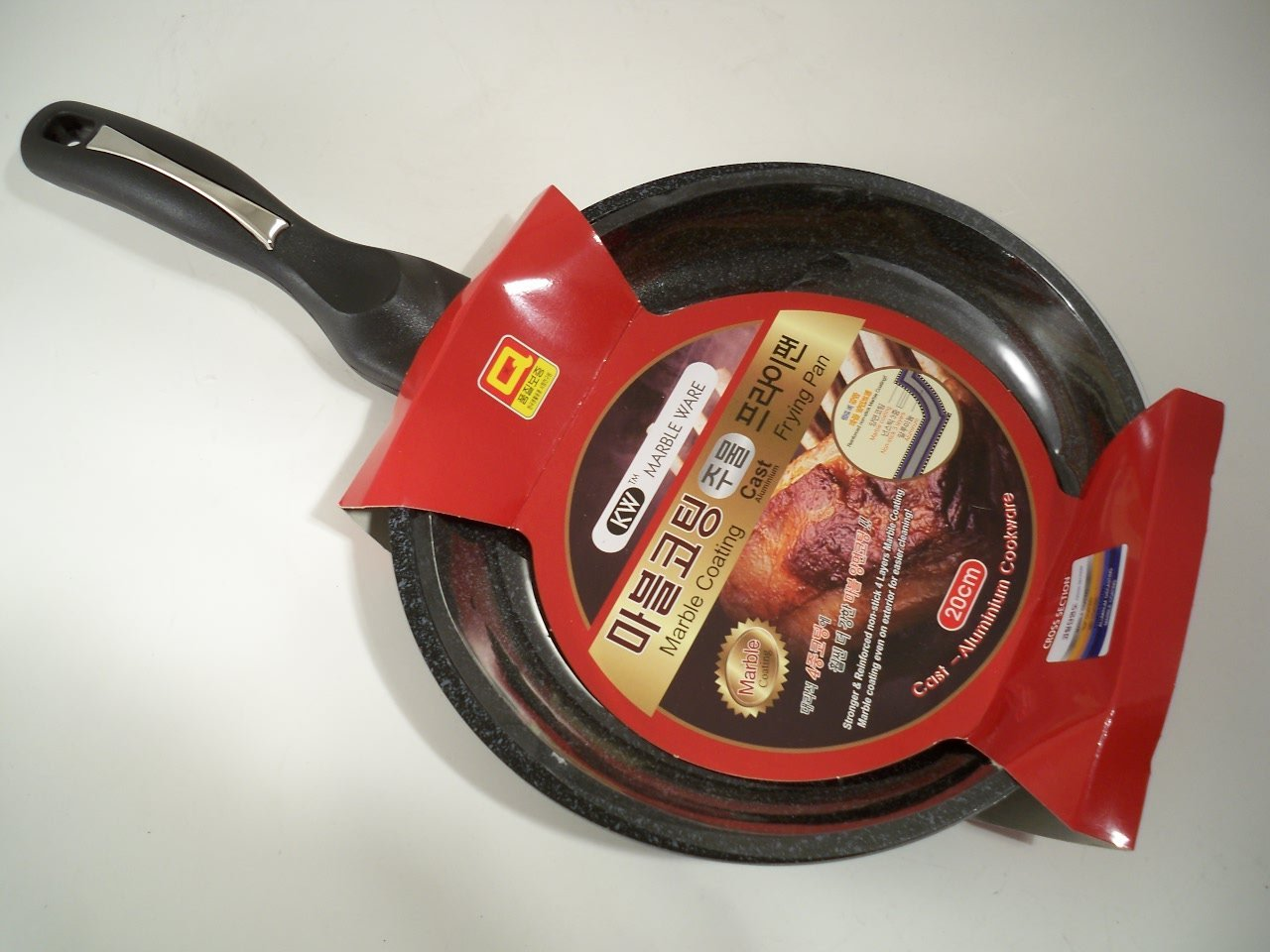 Speckle-ware, v.2.0
Speckle-ware, v.2.0
Name Dropping
Having convinced a large swath of the eating public that cooking without fat is ?healthy? while meeting ever more suspicion about the cooking-in-plastic-is-perfectly-safe fiction, how does a marketer get people to buy the successor to Teflon and its perfluoronated petrochemical-based analogues? Why, dress the same basic product in such a way as to ennoble it by association!
Think of Ford, circa 1976:
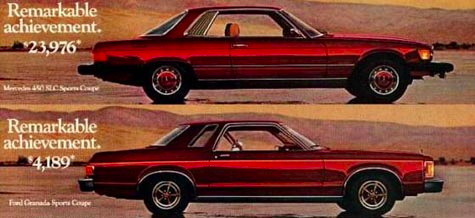 Ford?s better idea? Masquerade as the better product.
Ford?s better idea? Masquerade as the better product.
When polymer-painted ?green? pans failed to catch on, the updated hustle would entail clumsy mimicry of prestige cookware optics and re-saturation of on-line and television ad space with obtuse suggestions of copper-like performance. A new infomercial star was born.
 This is your egg on polymerized petrochemicals and sand. Any questions?
This is your egg on polymerized petrochemicals and sand. Any questions?
Your $20 Worth
This would all be far less troubling were the products in question at all worthy of the name cookware. Have a look at reviews on Amazon and elsewhere in the wider web for any of the products listed above; $19.95 buys 2?3 stuck and ruined dinners before the lining begins to degrade, and/or the pan body warps like a potato chip, and/or, in the case of ?induction-ready? models, the steel induction plate violently delaminates.
Not surprisingly, marketing budgets for cheap wares include fabricated reviews. Almost all the positive reviews for any of the products above are posted within the same few calendar days following the product?s debut, whereas the critical reviews are uniformly more recent.
(By the way, ?cheap? is not my word here, it?s in fact used often as a superlative in manufacturers? listings for these pans, as in ?Aluminum Non-stick Ceramic cheap & quality copper/Frying Pan!?)
Even if one succumbs to the ridiculous ?seasoning? preparation recommended in the enclosures for many of these pans (the cookware-care equivalent of watering plastic flowers), the aluminum-dressed-in-copper-drag act collapses soon after getting one of these things on your range top. Between a flyweight, low-density stamped aluminum body, hollow metal or plastic handle and microns-thin copper-colored spray laminate, any of these pans will spend less time working for you than they did at sea in a shipping container.
Whatever else these products may have been produced to do (like make 400% profit margins), they do not tolerate being used for actual cooking very well, or for very long.
The same twenty of your dollars could be spent on a 2mm carbon steel pan from any of several manufacturers. Seasoning of carbon steel is a meaningful gesture in that it provides a durable and renewable non-stick surface in a pan that will provide good, trouble-free and non-toxic service for decades. In addition to tin-lined copper, simple steel is the genuine article the copper-tinted-poser crowd would have you believe they are.
Hucksterism reliably proclaims its own virtue loudly in the public square. On the bright side, I suppose it?s not the worst thing in the world for makers of authentic copper cookware that hucksters think copper has cach in the popular consciousness. I certainly don?t worry about anyone forming a false association with, or impression of, BCC?s wares, but I do regret that so many more chunks of metal with sand ?infused? toxic plastic coatings will be in landfills by the time the junk peddlers have moved on to their next con.
If you find there?s merit to what I?ve written Please tap or click ???? to help other people find it on social media. If you have any questions or comments please let us know so we can continue the conversation!
